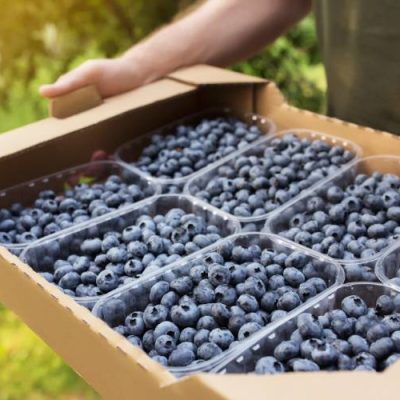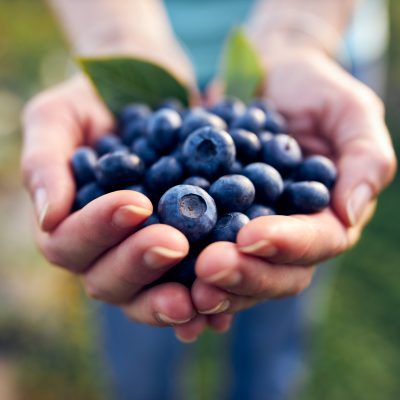Morocco’s blueberry sector grows rapidly despite water challenges
- . October 2025
The North African country is betting on water efficiency, market diversification, and agricultural innovation to sustain growth that challenges large producers in the southern hemisphere.
Over the past decade, Morocco has become one of the most dynamic players in the global blueberry industry. In the 2024 campaign, Moroccan blueberry exports reached approximately 74.000 tons, an increase in 15% compared to 2023, according to data from the Moroccan Interprofessional Federation of Fruits (FIFEL)Export revenues exceeded USD 500 million, driven by European demand for healthy, low-environment products.
What began as an experimental bet in the regions of Larache and Loukkos At the beginning of the 2000s, today it is a sector that exceeds 7.500 hectares cultivated with blueberries in 2025, (with the goal of reaching 10 thousand hectares in this decade) and exports more than 95 thousand tons per year of fresh fruit (96.193 tons, which corresponds to 27% more than the previous campaign), consolidating the country as the first African exporter and one of the main global suppliers.
Growth and orientation towards the European market
Morocco’s unmatched competitive advantage lies in its strategic geographical position where it is located with respect to the European market. This proximity allows freshly harvested Moroccan fruit to reach the final consumer in a matter of hours, in the markets of United Kingdom, Germany, France and/or Spain, with logistics costs significantly lower than those of direct competitors, such as Peru, Mexico or Chile.
International companies like Driscoll’s, BerryWorld and SanLucar They have invested in the northern part of the country, establishing alliances with local producers and transferring post-harvest management and precision irrigation technology. This has allowed them to increase average productivity to more than 12 tons per hectare, with high-quality fruit intended for fresh consumption.
The challenge of water and climate change
The growth of the sector, however, faces a structural limit: the water stressMorocco is one of the Mediterranean countries most vulnerable to climate change, with a sustained decline in rainfall and overexploitation of aquifers in intensive agricultural areas.
To keep the blueberry expansion – a crop that requires careful management of water resources -, the government has promoted irrigation efficiency and modernization programs, framed in the strategy Generation Green 2020–2030. Producers are adopting drip irrigation systems, satellite monitoring, and the reuse of treated water, measures that seek to make agro-export development compatible with environmental sustainability.
Global competition and the need for diversification
On the global stage, Morocco compete directly with Peru, Chile, Mexico and Spain, countries that have consolidated their logistics chains and their presence in European supermarkets. However, the Moroccan commercial window, between January and May, allows it to occupy a key counter-season niche, when South American supplies begin to decline.
Even so, profit margins have been reduced by international price pressure, rising transportation costs, and European Union phytosanitary requirements.
In this scenario, Moroccan exporters are exploring new destinations in the Middle East and Asia, particularly United Arab Emirates and China, to reduce its dependence on the European market.
Perspectives towards 2030
The projections of Moroccan Ministry of Agriculture They estimate that the planted area of blueberries could exceed 9.000 hectares by 2030, with exports close to 120.000 tons annually. The country seeks to consolidate itself as an agro-export hub in the north of Africa, supported by the port infrastructure of Tangier Med and commercial agreements with the European Union and United Kingdom.
The challenge, however, will not only be productive, but also social and environmental, because the success of the Moroccan blueberry It will depend on the country’s ability to balance international competitiveness with rational water use, fair working conditions, and adaptation to climate change.
In short, Morocco has managed to position itself as an emerging leader in the global blueberry industry thanks to its geography, rapid agricultural modernization, and proximity to major consumer markets. However, the sector’s future will depend on its ability to innovate and sustain its growth without compromising the natural resources that made it possible.
10-27-2025
Source: Blueberriesconsulting.com







